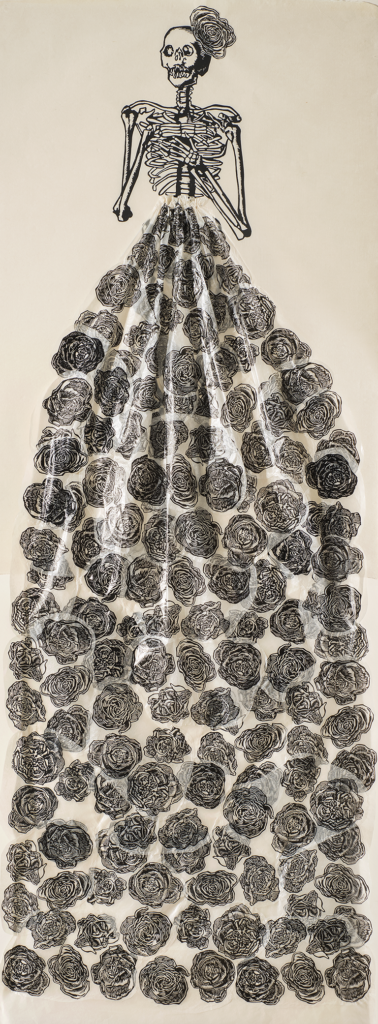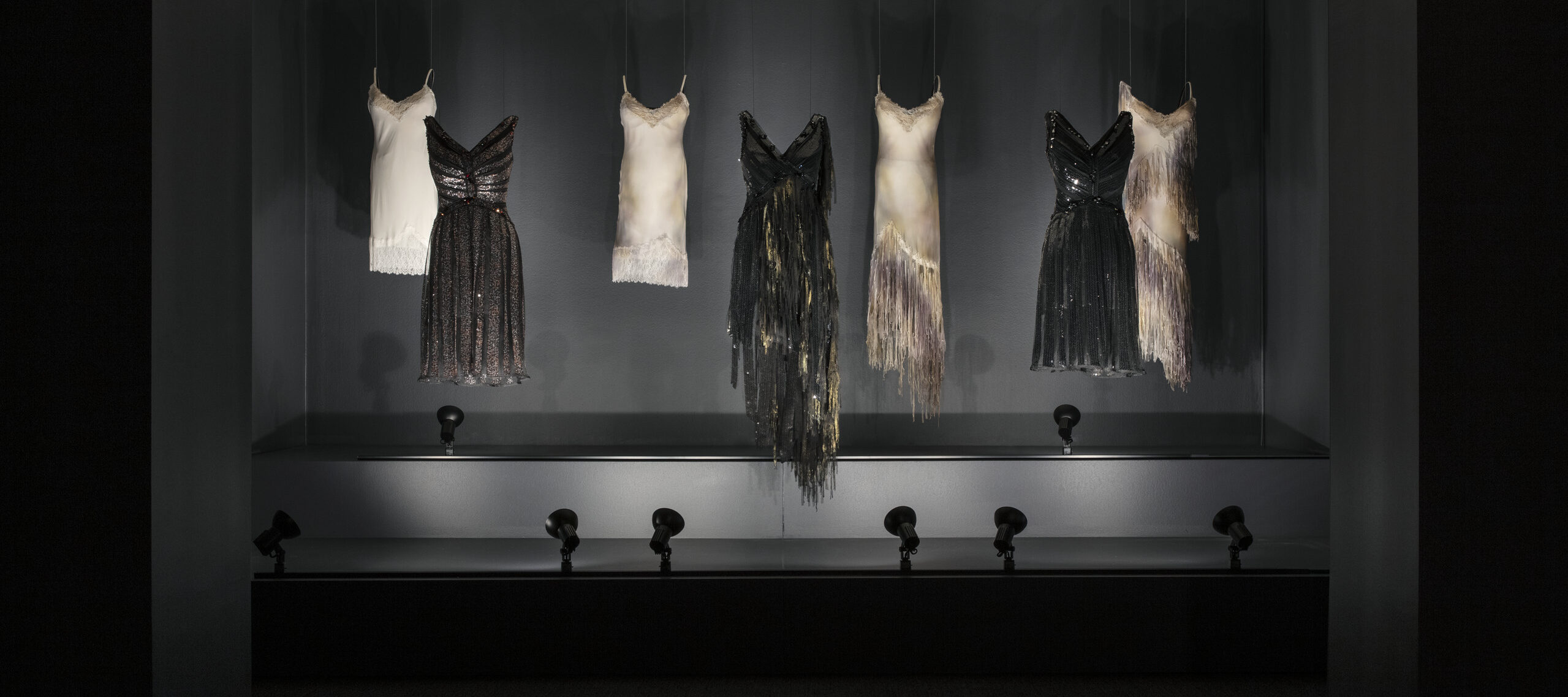NMWA’s exhibition Rodarte celebrates the innovative American fashion house, founded by sisters Kate and Laura Mulleavy. The show—open until February 10, 2019—is a survey of the designers’ visionary concepts, impeccable craftsmanship, and impact on the fashion industry. The dresses on view share visual appeal and many common threads with works in NMWA’s collection. From technique to theme, dive into five innovative works by artists at NMWA in this series, “Connecting the Threads.”
Tragic Figures
Eccentric British aristocrat and fashion icon Isabella Blow committed suicide in 2007 at age forty-eight. She was famous for her unfiltered wit and visionary fashion sensibilities. Artist Audrey Niffenegger (b. 1963) was a stranger to Blow, but so moved by her life and death that she created a series of works for her. Black Roses (for Isabella Blow) (2007), the largest piece in the series, is part of NMWA’s collection. It features a skeleton adorned in a cascading skirt of black roses and a black rose hat—a nod to Blow’s close friend and acclaimed hat designer Philip Treacy. Of these works, Niffenegger said, “After she died I had dreams about her. I wanted to give her something…. So I made some pictures for her. It isn’t much, but it is in a language she would have understood.”

In 2017, the Mulleavys wrote and directed their first feature film, Woodshock, which starred Kirsten Dunst. The story traces the emotional unraveling of Dunst’s character, Theresa, as she grieves the loss of her mother and considers suicide. Her personal state, intensified by the use of psychotropic substances, is mirrored in her wardrobe, which becomes both increasingly distressed and elaborate.
Wearing Emotion
The themes of mortality and the passage of time are of interest to both Niffenegger and the Mulleavys. Blow was said to have suffered after being unable to find stable footing in an industry that could not “compute her value.” In Woodshock, Theresa is shown in the grips of an existential crisis, questioning her own place in the world after her mother’s death.
In both cases, the artists used delicate materials to convey grief and depression. Niffenegger used Gampi tissue paper, silky and translucent, to form the flowing skirt in her piece—perhaps also referring to the fact that even in her anguish, Blow was always dressed elegantly. The Mulleavys worked with silk crepe, lace, and chiffon to create Theresa’s black-and-white dresses. They colored the white dresses with mauve and beige so that they appear bruised over time, communicating Theresa’s sadness and isolation.
Layers of Meaning
The works of Niffenegger and the Mulleavys also portray deeper facets of their subject’s emotions. Blow openly talked about her desire to commit suicide and approached the subject with candor and humor. Niffenegger captured elements of Blow’s personality in the skeleton, which appears in an almost conversational pose—mid-sentence with hands mid-gesture. In Woodshock’s ending, Theresa reaches destructive depths and the dresses take on new aspect: there is a violence and power in their bruised coloring and the black that cloaks Theresa’s body like a shield.

